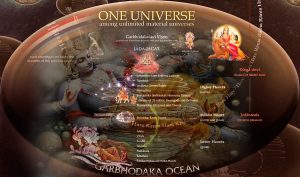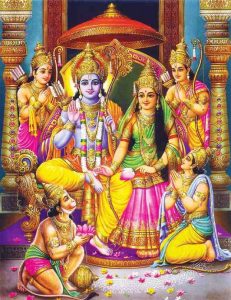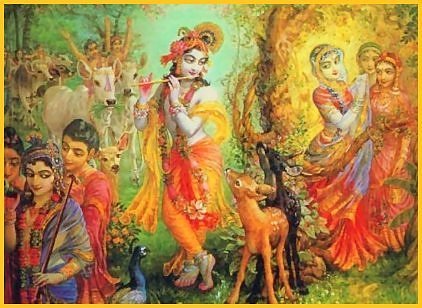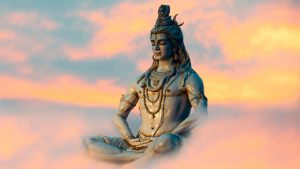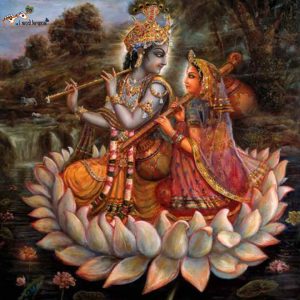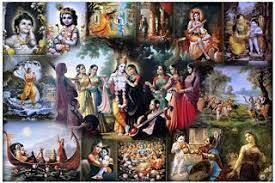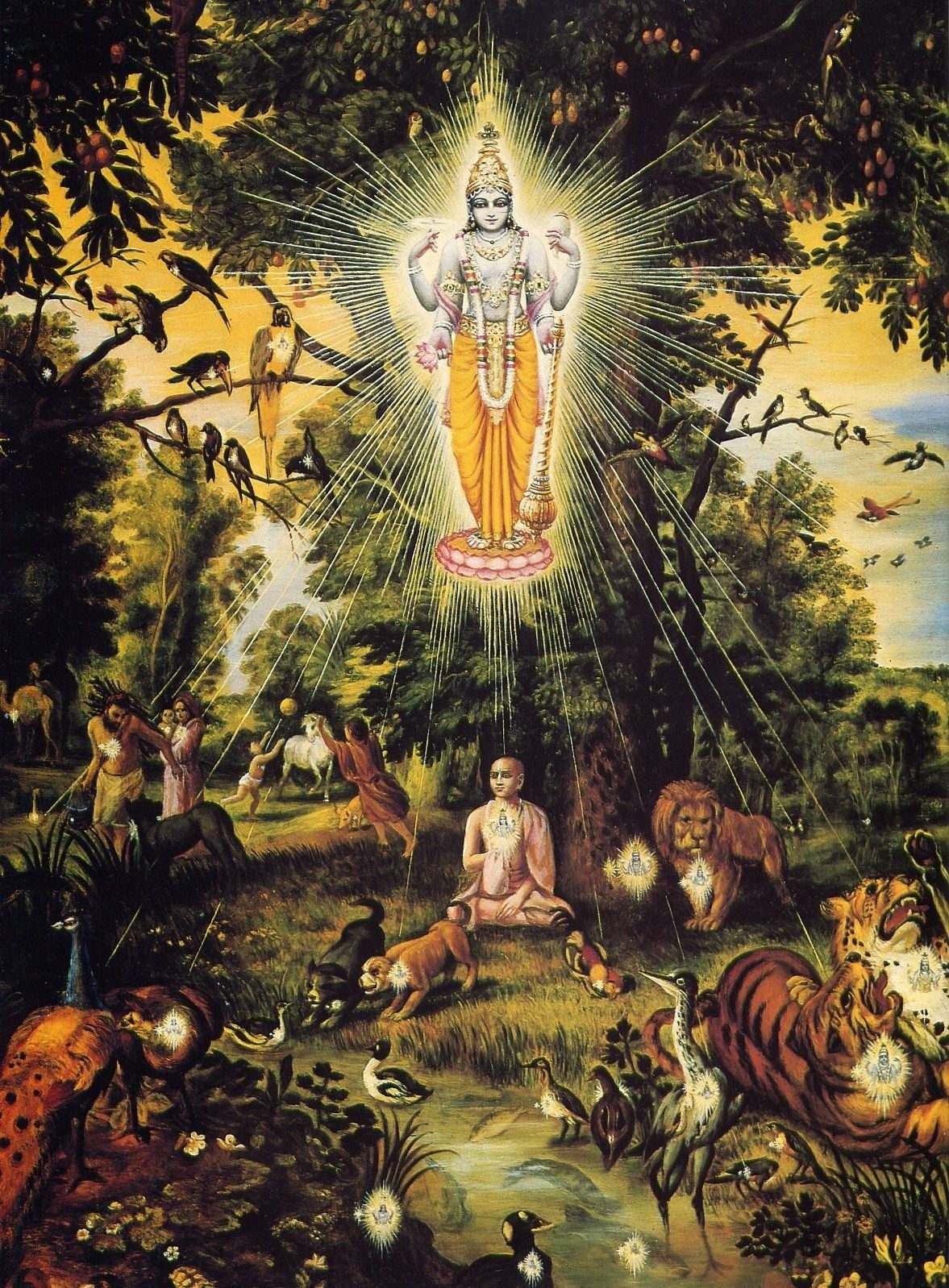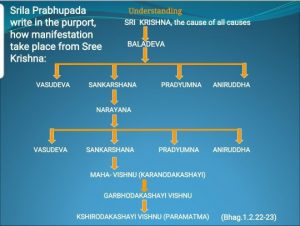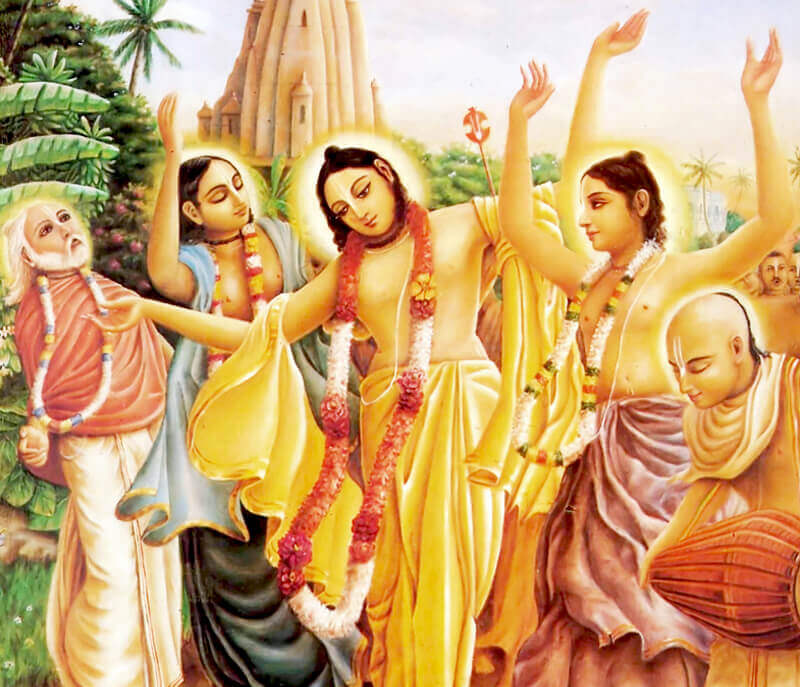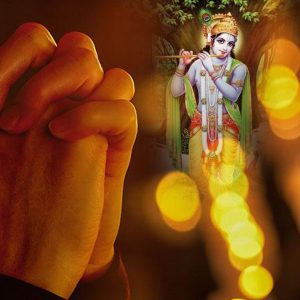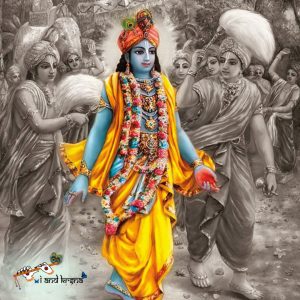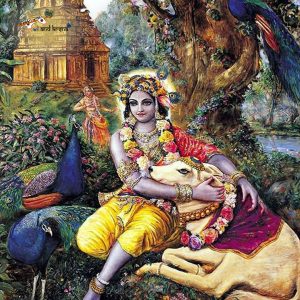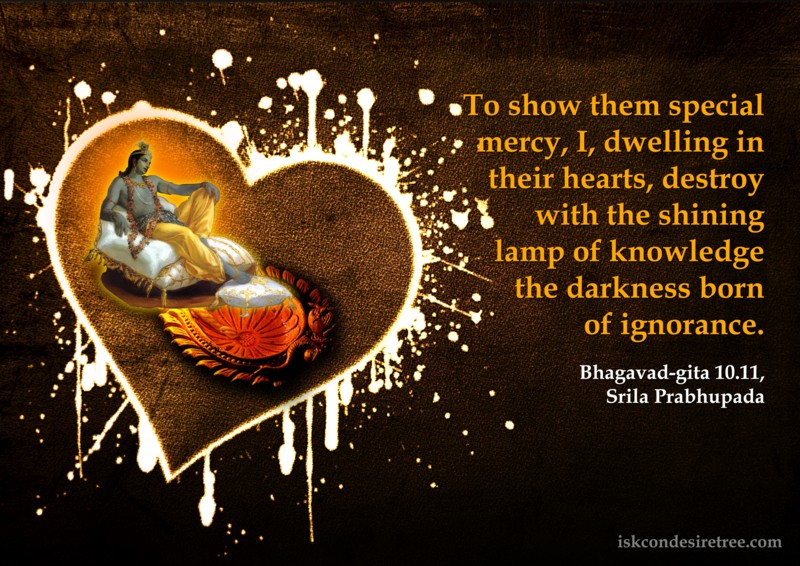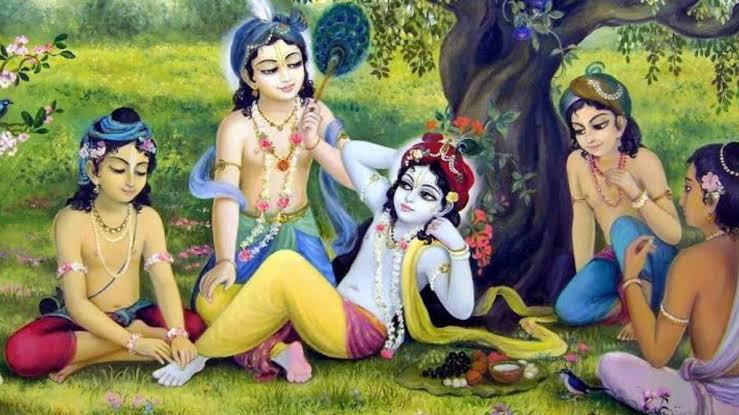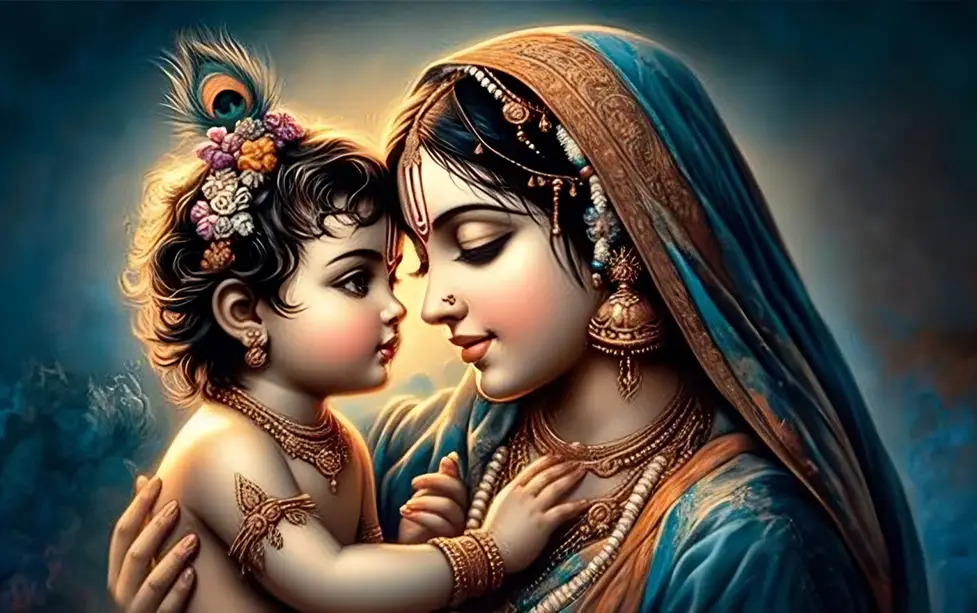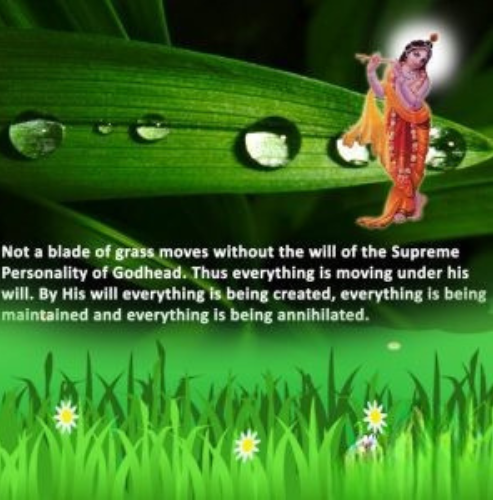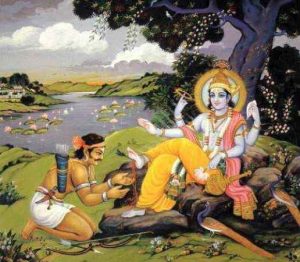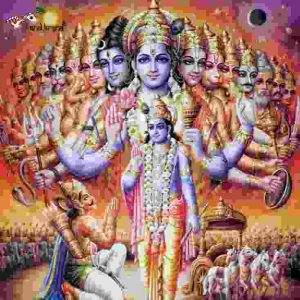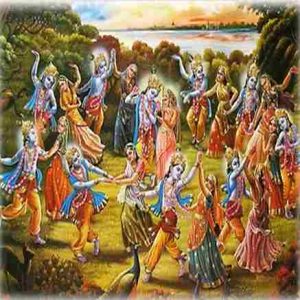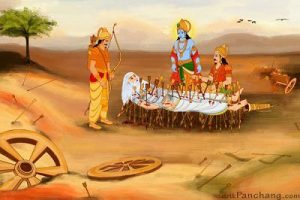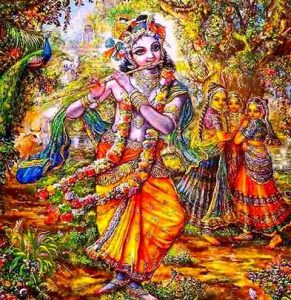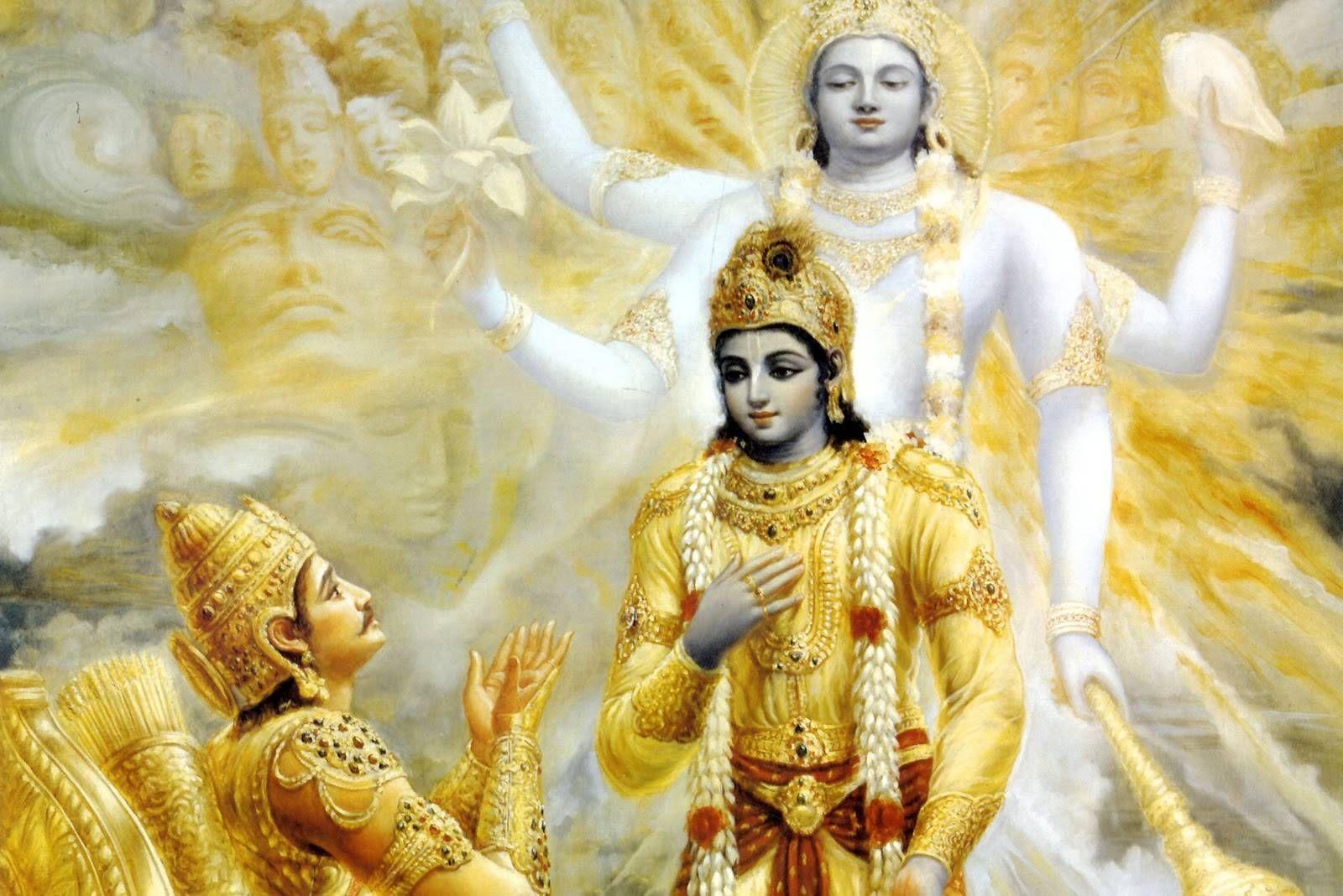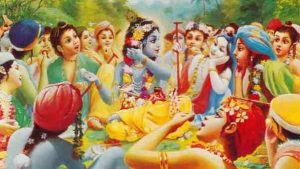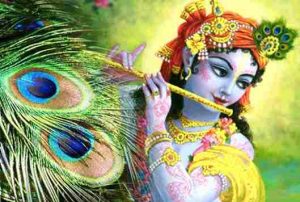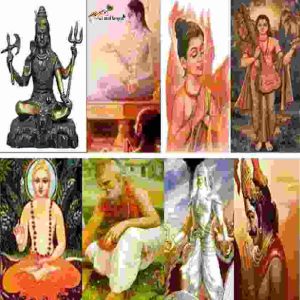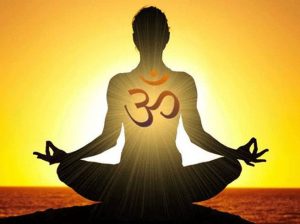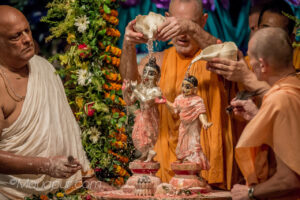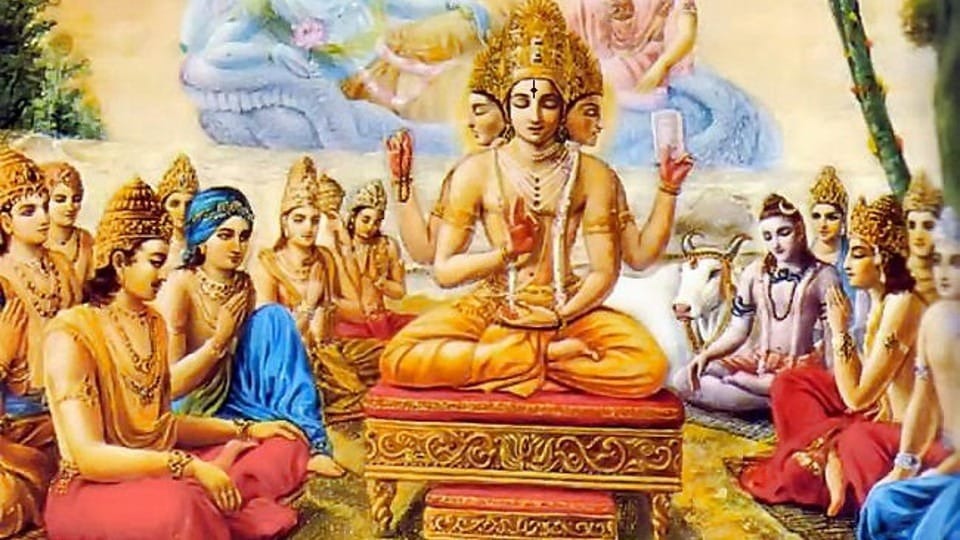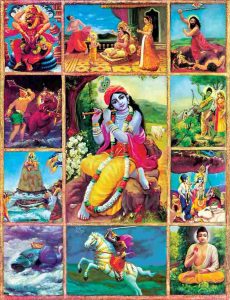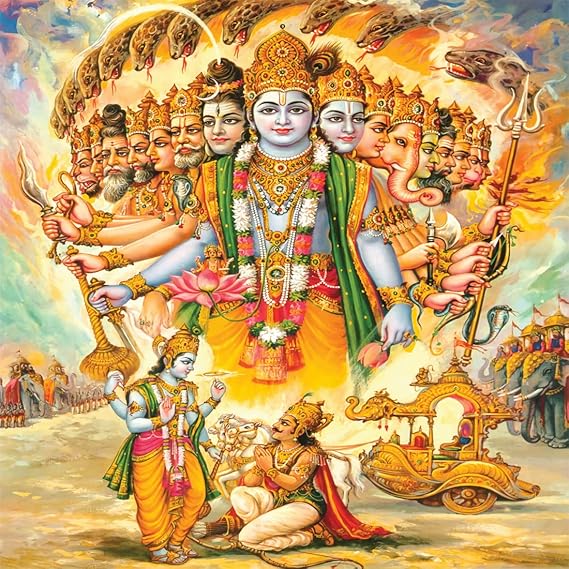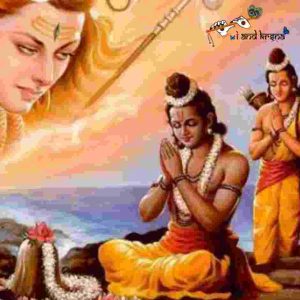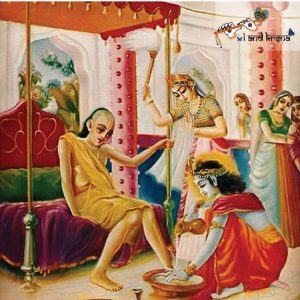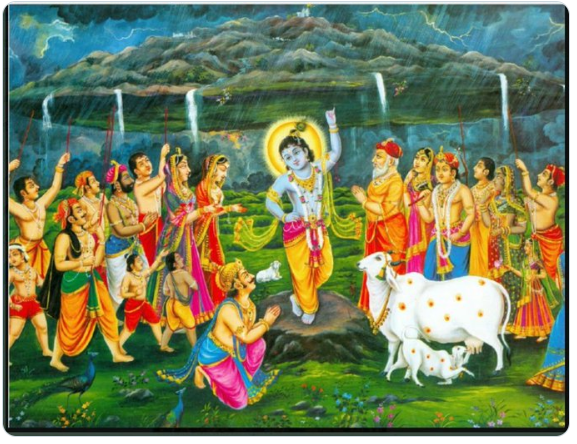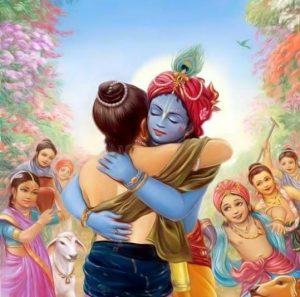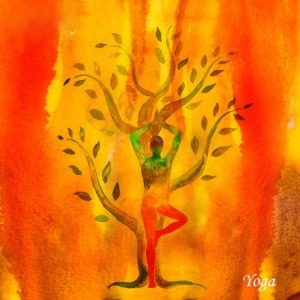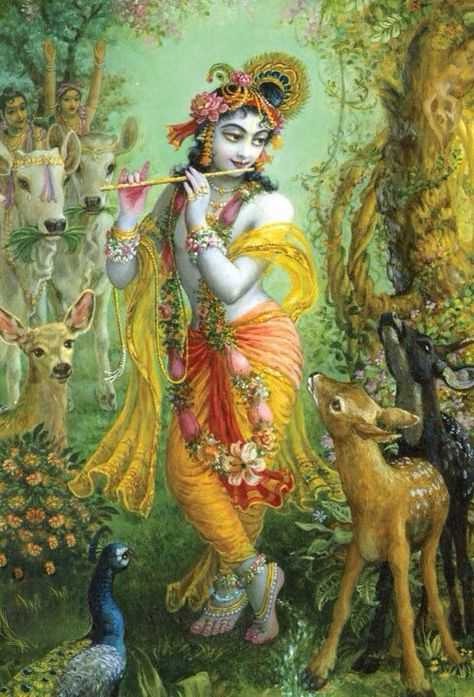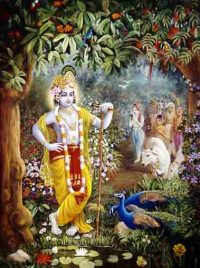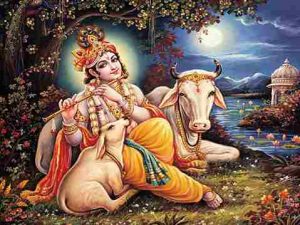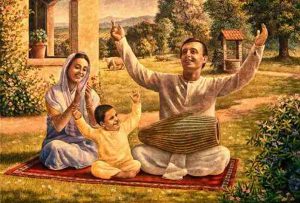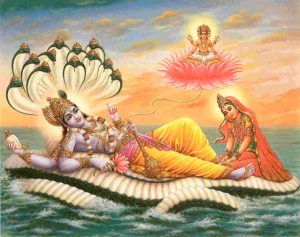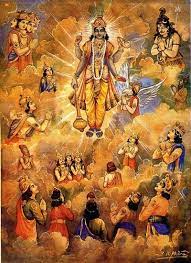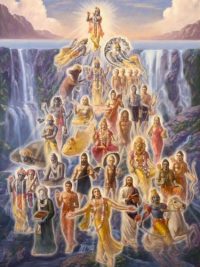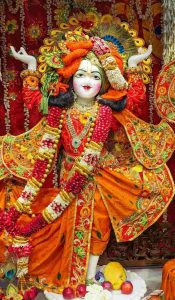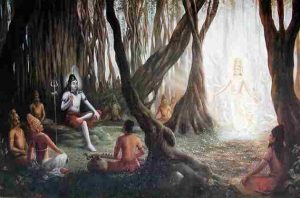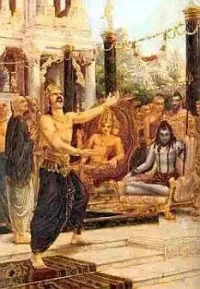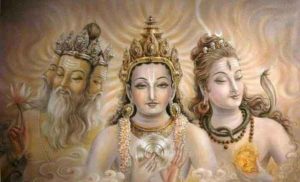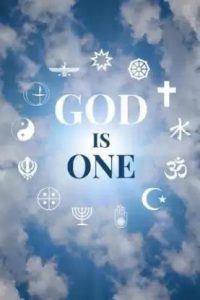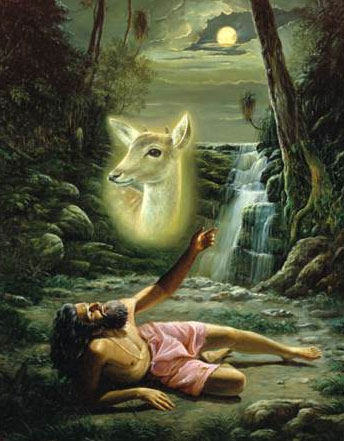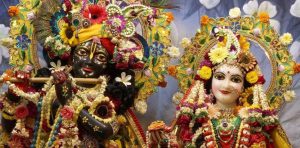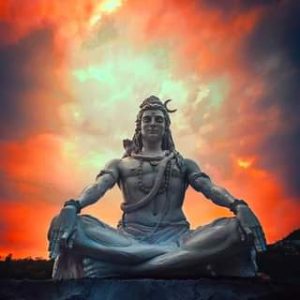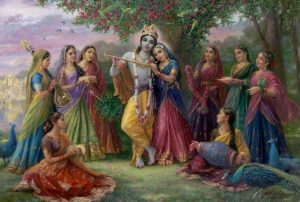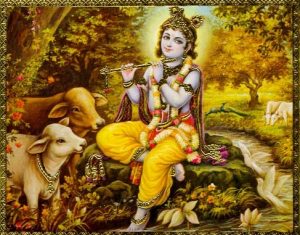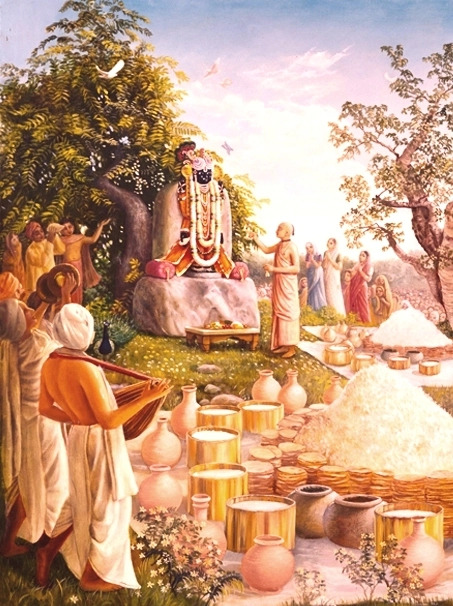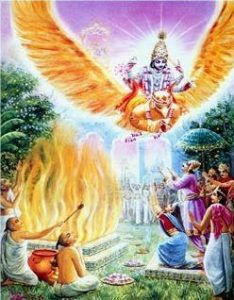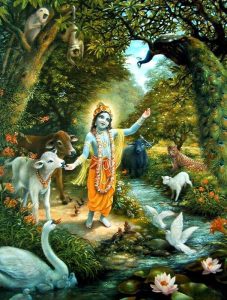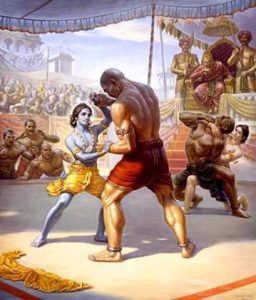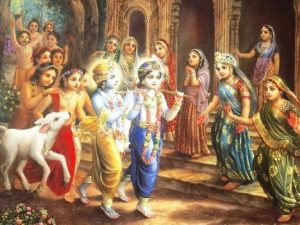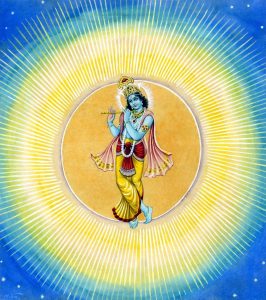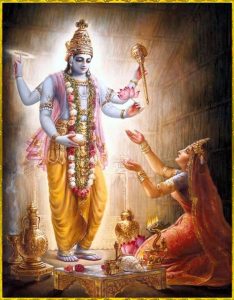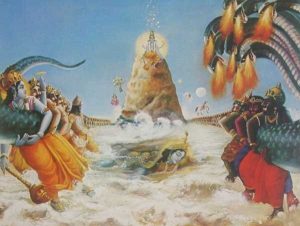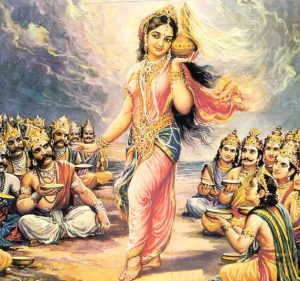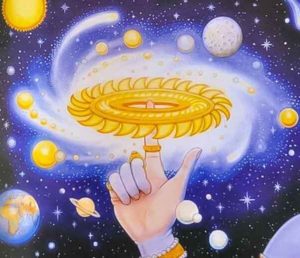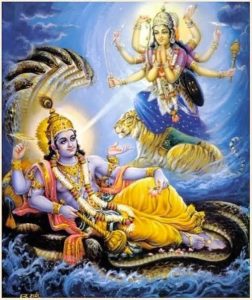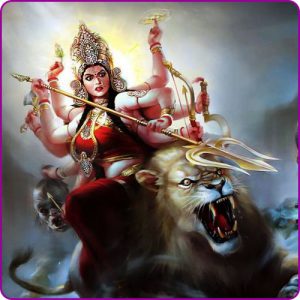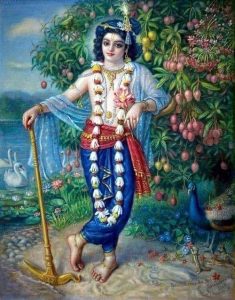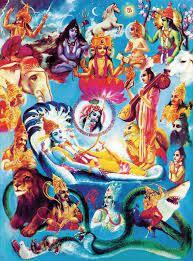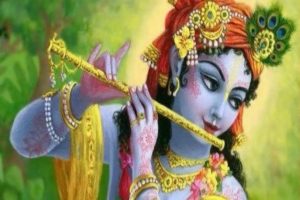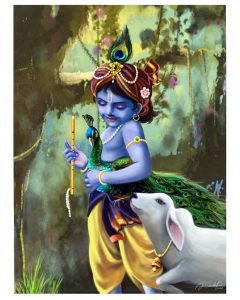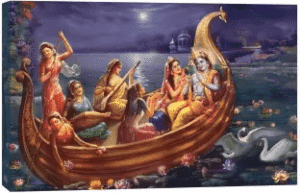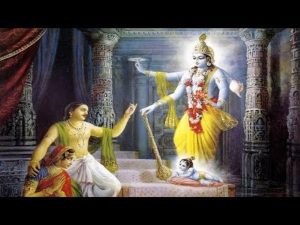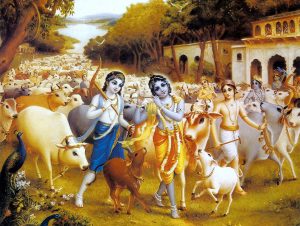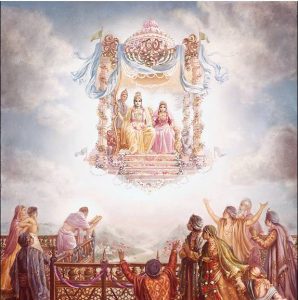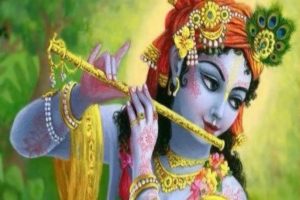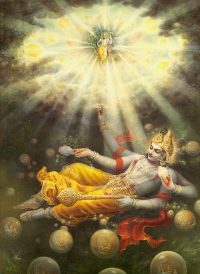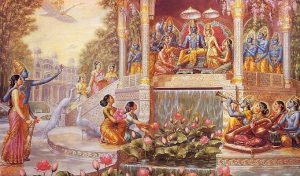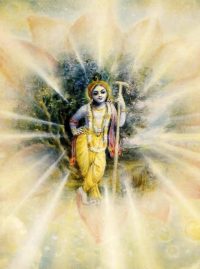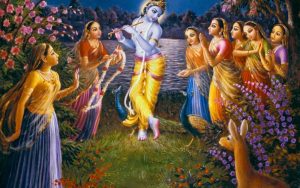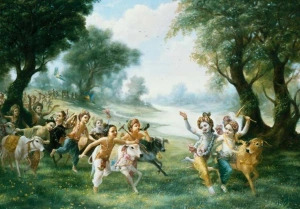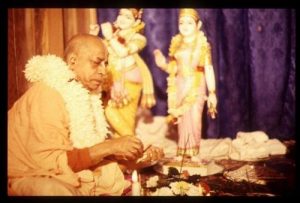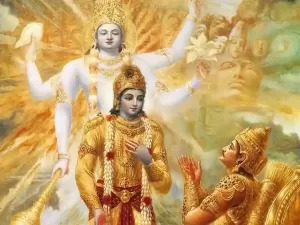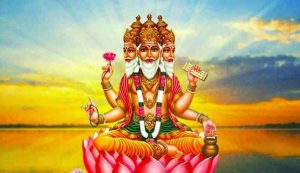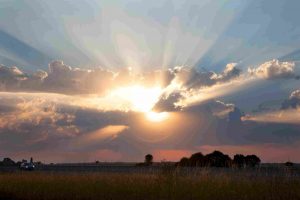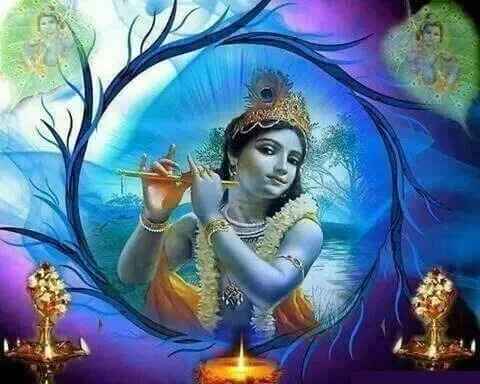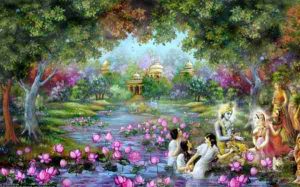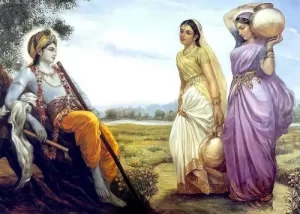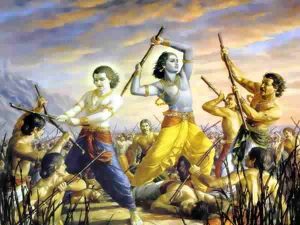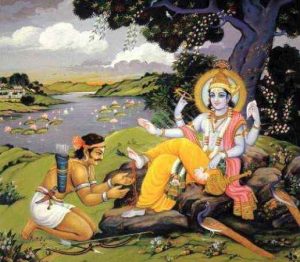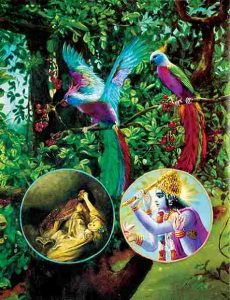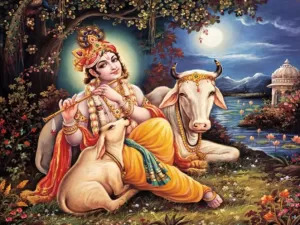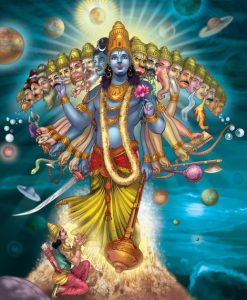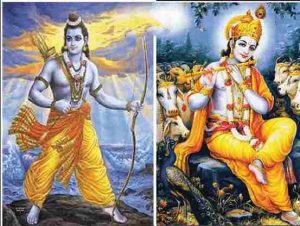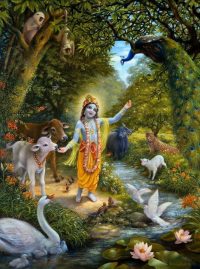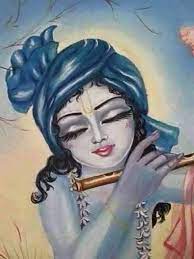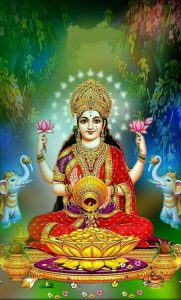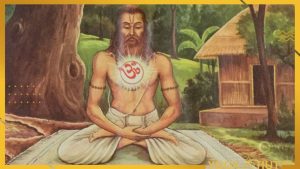Lords Purusha avatar’s.
The Bhagavad-gita states that the Personality of Godhead Sri Krishna maintains these material universes by extending His plenary expansions. So this Purusha form is the confirmation of the same principle. The original Personality of Godhead Vasudeva, or Lord Krishna, who is famous as the son of King Vasudeva or King Nanda, is full with all opulences, all potencies, all fame, all beauty, all knowledge, and all renunciation. Part of His opulence is manifested as impersonal Brahman, and part of His opulence is manifested as Paramatma. This Purusha feature of the same Personality of Godhead Sri Krishna is the original Paramatma manifestation of the Lord. There are three Purusha features in the material creation, and this form, who is known as the Karanodakasayi Vishnu, is the first of the three. The others are known as the Garbhodakasayi Vishnu and the Ksirodakasayi Vishnu, which we shall know one after another. The innumerable universes are generated from the skin holes of this Karanodakasayi Vishnu, and in each one of the universes, the Lord enters as Garbhodakasayi Vishnu.
In the Bhagavad-gita, it is also mentioned that the material world is created at certain intervals and then again destroyed. This creation and destruction are done by the supreme will because of the conditioned souls, or the Nitya-baddha living beings. The Nitya-baddha, or the eternally conditioned souls, have a sense of individuality or ahankara, which dictates them sense enjoyment, which they are unable to have constitutionally. The Lord is the only enjoyer, and all others are enjoyed. The living beings are predominated, enjoyers. But the eternally conditioned souls, forgetful of this constitutional position, have strong aspirations to enjoy. The chance to enjoy matter is given to the conditioned souls in the material world, and side by side they are given the chance to understand their real constitutional position. Those fortunate living entities who catch the truth and surrender unto the lotus feet of Vasudeva after many, many births in the material world join the eternally liberated souls and thus are allowed to enter into the kingdom of Godhead. After this, such fortunate living entities need not come again within the occasional material creation. But those who cannot catch the constitutional truth are again merged into the mahattattva at the time of the annihilation of the material creation. When the creation is again set up, this mahat-tattva is again let loose. This mahat-tattva contains all the ingredients of the material manifestations, including the conditioned souls. Primarily this mahat-tattva is divided into sixteen parts, namely the five gross material elements and the eleven working instruments or senses. It is like the cloud in the clear sky. In the spiritual sky, the effulgence of Brahman has spread all around, and the whole system is dazzling in a spiritual light. The mahat-tattva is assembled in some corner of the vast, unlimited spiritual sky, and the part which is thus covered by the mahat-tattva is called the material sky. This part of the spiritual sky, called the mahat-tattva, is only an insignificant portion of the whole spiritual sky, and within this mahat-tattva, there are innumerable universes. All these universes are collectively produced by the Karanodakasayi Vishnu, called also the Maha-Vishnu, who simply throws His glance to impregnate the material sky.
The first purusha is the Karanodakasayi Vishnu. His skin holes innumerable universes have sprung up. In each and every universe, the purusha enters as the Garbhodakasayi Vishnu. He is lying within the half of the universe which is full with the water of His body. And from the navel of Garbhodakasayi Vishnu has sprung the stem of the lotus flower, the birthplace of Brahma, who is the father of all living beings and the master of all the demigod engineers engaged in the perfect design and working of the universal order. Within the stem of the lotus, there are fourteen divisions of planetary systems, and the earthly planets are situated in the middle. Upwards there are other, better planetary systems, and the topmost system is called Brahmaloka or Satyaloka. Downwards from the earthly planetary system, there are seven lower planetary systems inhabited by the asuras and similar other materialistic living beings. From Garbhodakasayi Vishnu there is an expansion of the Ksirodakasayi Vishnu, who is the collective Paramatma of all living beings. He is called Hari, and from Him, all incarnations within the universe are expanded.
Therefore, the conclusion is that the purusha-avatara is manifested in three features — first, the Karanodakasayi who creates aggregate material ingredients in the mahat-tattva, second the Garbhodakasayi who enters in each and every universe, and third the Ksirodakasayi Vishnu who is the Paramatma of every material object, organic or inorganic. One who knows these plenary features of the Personality of Godhead knows Godhead properly, and thus the knower becomes freed from the material conditions of birth, death, old age, and disease, as it is confirmed in Bhagavad-gita, In this sloka, the subject matter of Maha-Vishnu is summarized. The Maha-Vishnu lies down in some part of the spiritual sky by His own free will. Thus He lies on the ocean of Karana, from where He glances over His material nature, and the mahat-tattva is at once created. Thus electrified by the power of the Lord, the material nature at once creates innumerable universes, just as in due course a tree decorates itself with innumerable grown fruits. The seed of the tree is sown by the cultivator, and the tree or creeper in due course becomes manifested with so many fruits. Nothing can take place without a cause. The Karana Ocean is therefore called the Causal Ocean. Karana means “causal.” We should not foolishly accept the atheistic theory of creation. The description of the atheists is given in the Bhagavad-gita. The atheist does not believe in the creator, but he cannot give a good theory to explain the creation. Material nature has no power to create without the power of the purusha, just as a prakrti, or woman, cannot produce a child without the connection of a purusha, or man. The purusha impregnates, and the prakrti delivers. We should not expect milk from the fleshy bags on the neck of a goat, although they look like breastly nipples. Similarly, we should not expect any creative power from the material ingredients; we must believe in the power of the purusha, who impregnates prakrti, or nature. Because the Lord wished to lie down in meditation, the material energy created innumerable universes at once, in each of them the Lord lay down, and thus all the planets and the different paraphernalia were created at once by the will of the Lord. The Lord has unlimited potencies, and thus He can act as He likes by perfect planning, although personally, He has nothing to do. No one is greater than or equal to Him. That is the verdict of the Vedas.
Source: A.C. Bhaktivedanta Swami Prabhupada (2014 edition), “Srimad Bhagavatam”, First Canto, Chapter 3 – Text 1 & 2

